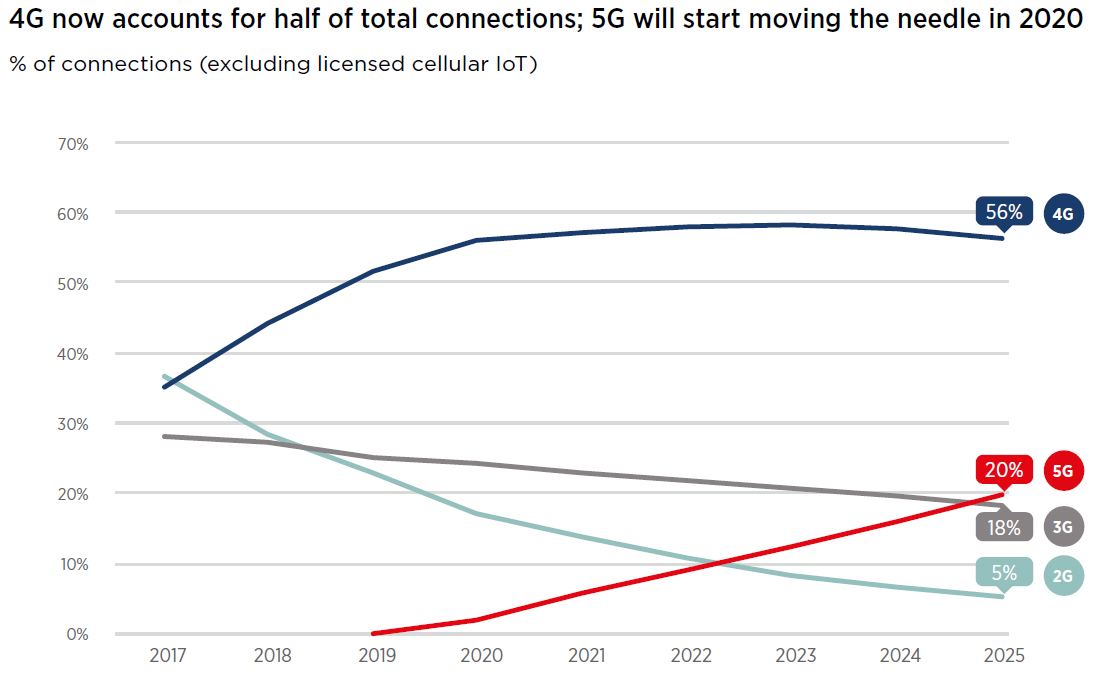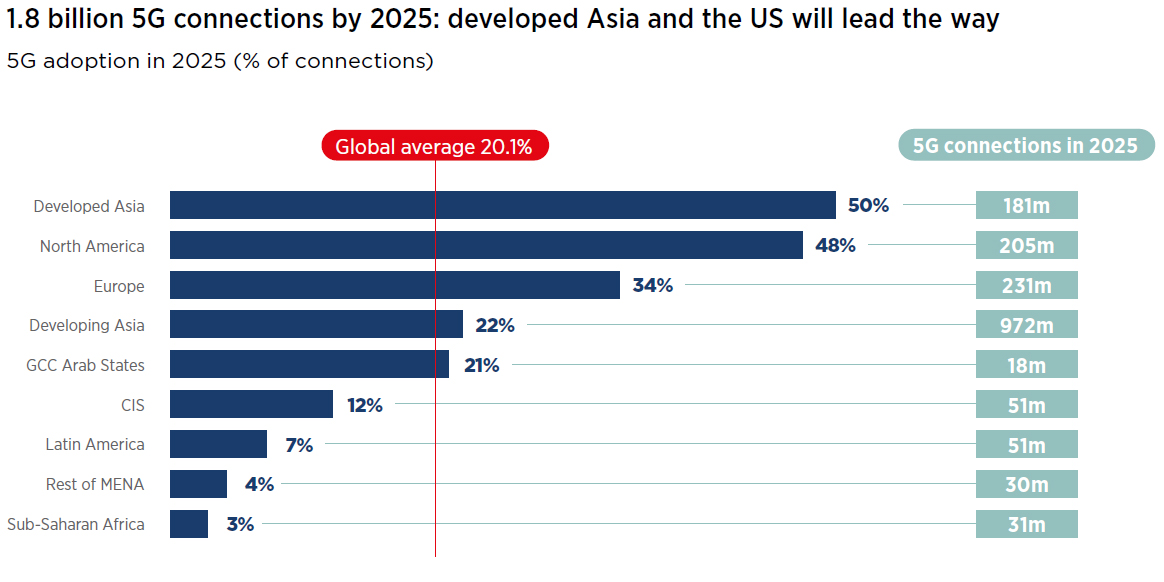In brief: By 2023, the GSMA expects to see 5G overtake 2G with more than a billion connections. Come 2025, that number is forecasted to hit 1.8 billion, accounting for 20 percent of global connections and eclipsing the total number of live 3G connections.
The fourth generation of broadband cellular network technology, affectionately known as 4G, was the globe's leading mobile technology in 2019 with over four billion connections. Collectively, it accounted for around 52 percent of total connections worldwide and is expected to peak at close to 60 percent by 2023 according to GSMA's 2020 Mobile Economy report.

Next-gen 5G technologies are slowly but surely gaining pace, the report notes. The speedy alternative is already available from 46 operators across 24 markets. A further 39 markets have additionally announced plans to launch commercial 5G service, we're told.
Hardware manufacturers are doing their part as well, having launched multiple smartphones compatible with the new tech. Consumer awareness is also on the rise, GSMA said, all of which will lead to increased penetration in the coming years.

Getting there won't be cheap, however, as mobile operators are expected to dump roughly $1.1 trillion into the industry over the next five years, 80 percent of which will be dedicated exclusively to 5G.
And just because 5G is technically available in a market that services your area doesn't necessarily mean the speedy network will be within your grasp. Some of the earliest examples boast incredibly short range and have difficulty penetrating solid objects like walls, limiting their usage to urban centers and other populated areas like sports stadiums.
Masthead credit: Smart city by metamorworks. Charts by GSMA.
